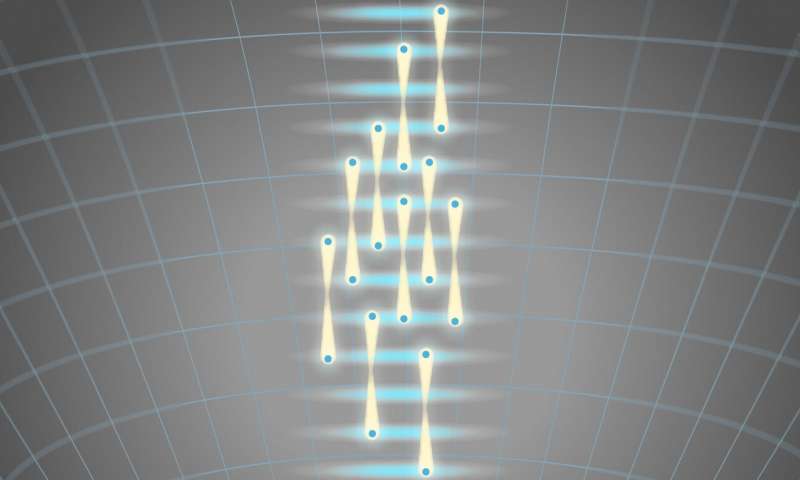
A new way to measure gravity: Using floating atoms
The usual approach to measuring gravity involves making something fall, preferably in a long shielded tube or tower, and then measuring it as it flies by with an instrument. While this age-old method connects to our everyday experience of gravity, it has limitations. For one, the opportunity to understand gravitational effects is very brief during such a test. There are also other forces, like magnetic fields, at play, possibly affecting the results.
The new technique developed by a team of researchers at the University of California , doesn't rely on making anything fall. Instead it pinpoints the differences in atoms in a superposition state. Superposition is the physics principle that says a system can be in multiple states until it's measured.
What the researchers figured out is a process that starts by releasing a cloud of Cesium atoms in a small chamber. Then they used flashing lights to split some of them into superposition states. Once the atoms were taken apart in this way, lasers were employed to keep them in fixed positions.
One atom in each pair was suspended a few micrometers higher than the other. This allowed the scientists to measure the wave particle duality of each atom's wave as it was being affected by gravity. Wave particle duality is the quantum mechanics idea that every particle can act as a particle or a wave.
Measuring differences in duality between the atoms in a pair, with each one being at a varying distance from Earth, allowed the researchers to quantify the effects of gravity on the atoms.
The advantage of this technique is that it can potentially help gather a lot of new information, with implications for a wide range of fields, even the search for dark matter. Not having the atoms zipping through the air aids in the collection of significantly more precise measurements of gravity as well as the gravitational attraction between objects and more.
It is also easier to protect these much smaller measuring devices from interfering magnetic fields.
Another cool thing - this type of approach makes it easier to create portable gravity-measuring devices. That way they can be taken to different places on Earth to look for mineral deposits and for improved mapping.
 English
English Arabic
Arabic


